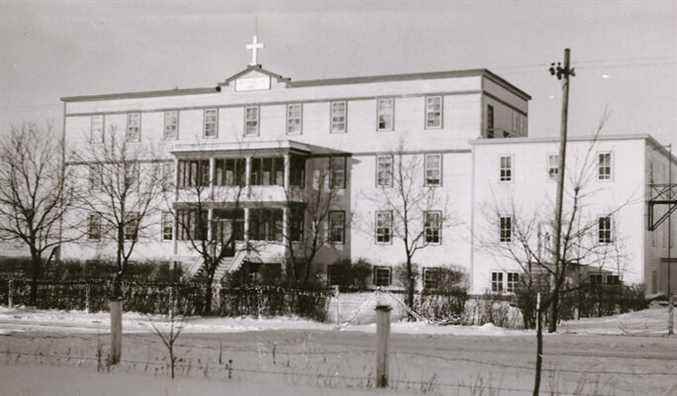(Keeseekoose) An Indigenous community in Saskatchewan says up to 54 unmarked graves may lie on the site of two former federal residential schools.
Posted at 2:33 p.m.
The Keeseekoose First Nation community says traces of graves have been reported, via radar, on the grounds of St. Philip and Fort Pelly residential schools. Both schools were located on First Nation land near Kamsack in eastern Saskatchewan.
“It will be a very difficult time for our community, knowing that we had unmarked graves right here, in grounds where we drive every day, where we walk every day,” Chief Lee Kitchemonia said.
Project leader Ted Quewezance said signals from ground-penetrating radar could suggest the presence of 42 unmarked graves at Fort Pelly and another 12 at St. Philip.
Mr. Quewezance, a former chief who attended residential schools, said the finding corroborates what people in the community have been saying for years. “It wasn’t that people couldn’t hear: they didn’t believe the story of our survivors,” Mr Quewezance said.
The Fort Pelly boarding school operated from 1905 to 1913. The National Center for Truth and Reconciliation said the principal was fired in 1911 after reports were made that he was drunk and threatened everyone at the school. After its closure, a day school opened in the same building.
St. Philip’s boarding school was run by the Catholic Church from about 1927 until 1969; it was called “hellish” by survivors. The Truth and Reconciliation Commission found that this boarding school had a widespread problem of sexual and physical abuse. In its last decade of existence, a supervisor was fired for student mistreatment.
“These are not just cases where a principal or a teacher severely punished students. It could be murdered, hidden children, Chief Kitchemonia said. We don’t know any of these answers. »
A St. Philip survivor, Fred Brass, told the Commission that there was a violent regime of punishment at that school. Mr. Bass lived day and night in fear of being mistreated. “I saw my brother with his face pressed against a hot pipe, then having his arm burned by a guard,” he said.
The Commission, which documented the stories of survivors and released its final report in 2015, documented two student deaths in St. Philip and two in Fort Pelly.
An estimated 150,000 First Nations, Inuit, and Métis children attended these federal residential schools between the 1860s and 1996. The Truth and Reconciliation Commission has documented at least 4,100 deaths at these residential schools.
St. Philip’s Foster Home in Keeseekoose, not far from the Saskatchewan-Manitoba border, took in children from 1902 to 1914, before being closed due to poor conditions. It was reopened in 1927 as a boarding school.
In the final report of the Truth and Reconciliation Commission, Elaine Durocher said that “the abuse began” as soon as she arrived at St. Philip residential school.
“We were stripped naked, taken to a dormitory. We got our hair sprayed […] We prayed all the time. We were still on our knees. We were told that we were stupid little savages and that we had to be educated, ”said Ms.me Of the rock.
She maintains that she received no significant education at this boarding school. “They were there to discipline you, teach you, beat you, rape you, assault you, but I never received an education. »
The “Indian Residential Schools Resolution Health Support Program” offers a telephone helpline to help survivors of residential schools and their loved ones who may be suffering from trauma caused by the memory of past abuse. The number is 1-866-925-4419.
